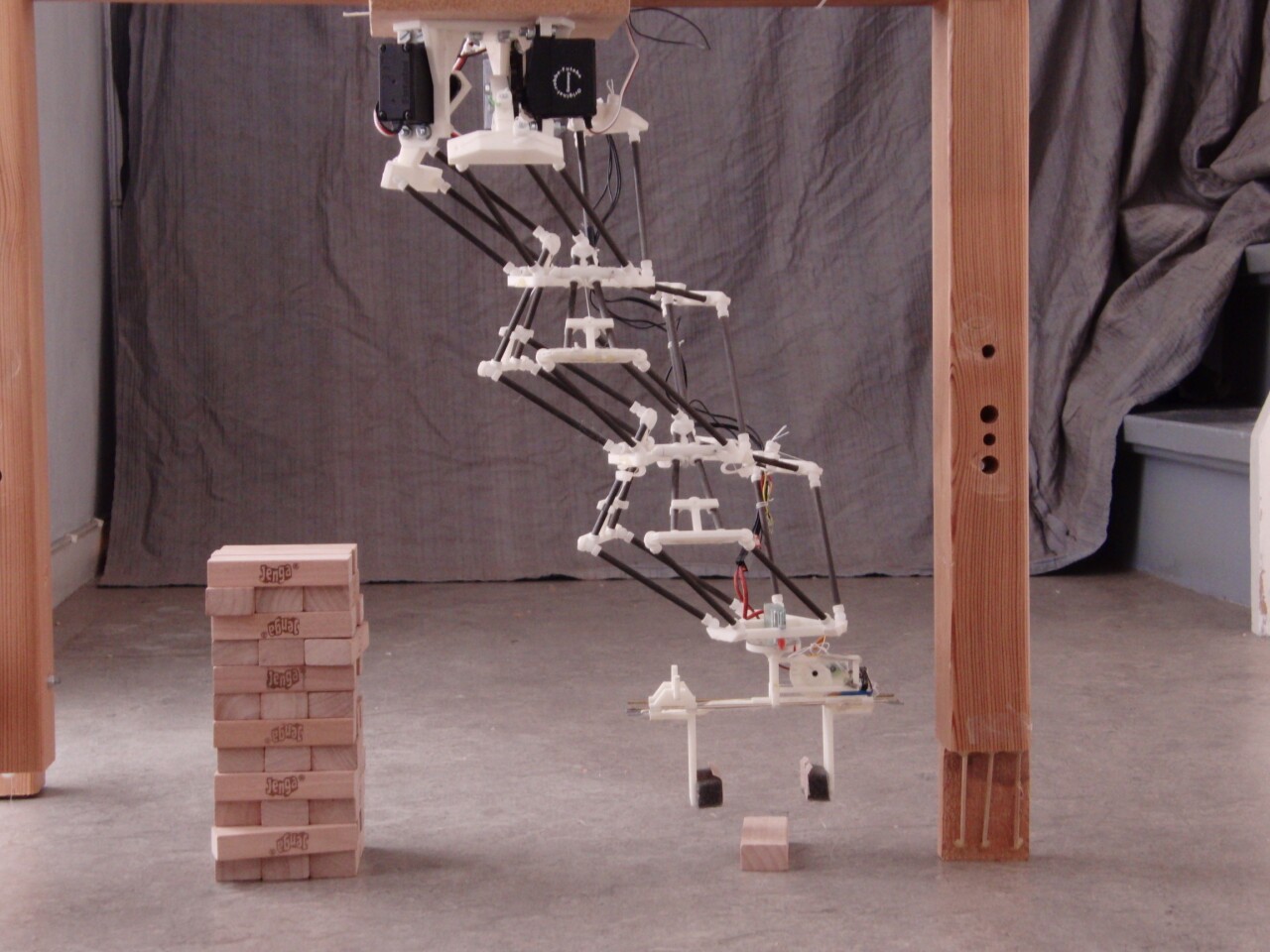The design of a standard robot arm is, more or less, a mechanized representation of an idealized human arm, replete with elbow and wrist joints. Such designs tend to be unwieldy in confined spaces, and unsuitable for many industrial production line processes. As a result, delta arms – a series of interconnected parallelograms which restrict movement to the X, Y or Z directions and do not rotate – have become popular for use in tight workspaces. But, when faced with a requirement for both flexibility and compactness, a design that incorporates the best of both types is required. That's where the double-delta robot comes in.
The standard delta robot was invented in the early 1980s by Reymond Clavel. When Aad van der Geest, an independent developer of software and electromechanical products, became acquainted with the delta robot for the first time, he was enamored with the design. However, when he attempted to use it in a practical situation, he was instantly aware of its one big problem: the robot is only capable of movement within a very small volume of space.
Traditional robot arms such as those used in heavy industry have large amounts of inertia to overcome and require correspondingly weighty components, but they are also strong and flexible. Van der Geest wanted to find a way to improve on the original lightweight delta creation with the parallel linkages to make it more useful in applications requiring traditional robot arms, but without their weight and inertia.
His idea, like many innovative ideas, was simple: Link multiple delta arms together, but leave the heavy control mechanisms and actuators attached to the base.

To achieve this, the robot's base (complete with all of the extensor and control actuators) is first mounted over the top of the work area. From this base, three arms with joints in the middle extend out to connect to a small triangle-shaped platform. This arrangement is then repeated as many times as required to achieve the desired length. Actuating each of the links in the required sequence will then move the triangular section in the X, Y or Z direction (up or down and along or across).
As this actuation is all done from the base, with the linkages all being controlled from the one point, the arms are able to be made of lighter or composite materials. As a result of this, the parts of the delta robot that are moved have little inertia, which enables very high movement speeds and equally fast acceleration from rest.
Having all the arms connected together to the end-effector also increases stiffness and strength without compromising weight, whilst reducing working volume, which is what van der Geest was aiming for. He has built three working prototypes to prove his ideas – the smallest being just 150 mm (6 in) long, whilst the largest measures over 3.5 meters (11.5 ft) in height.
Though the delta robots described mostly use rotary actuators, van der Geest has recently also experimented with vertical linear actuators in a linear delta design that he has used to create a novel type of 3D printer. According to the creator, these offer the capability of larger build volumes for prices comparable to a conventional 3D printer, and for a comparable investment.
No announcement has been made regarding any potential commercial release.
Source: Aad van der Geest
The short video below shows some of these innovative robot arms in action.
















